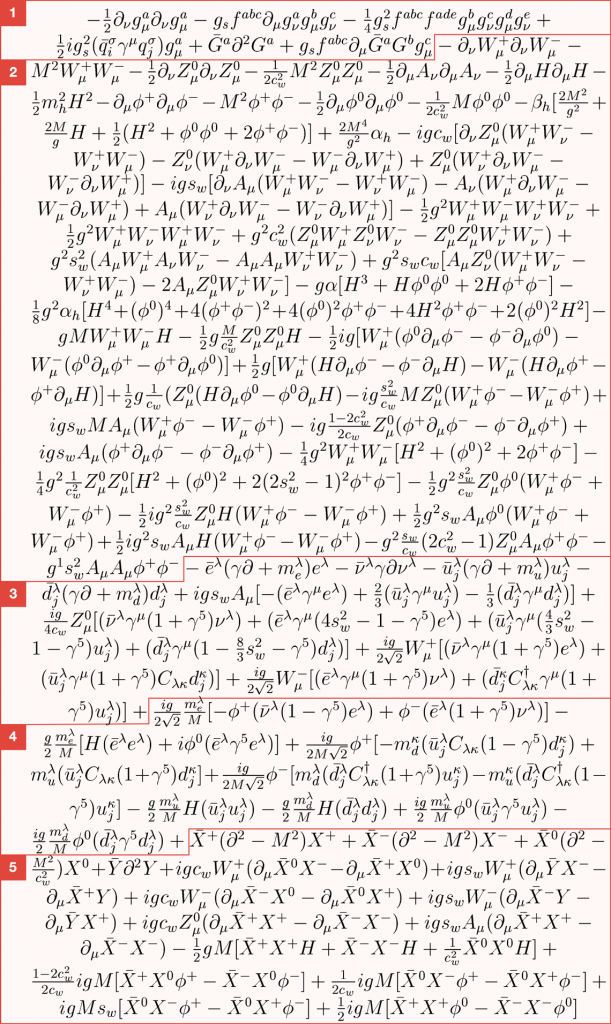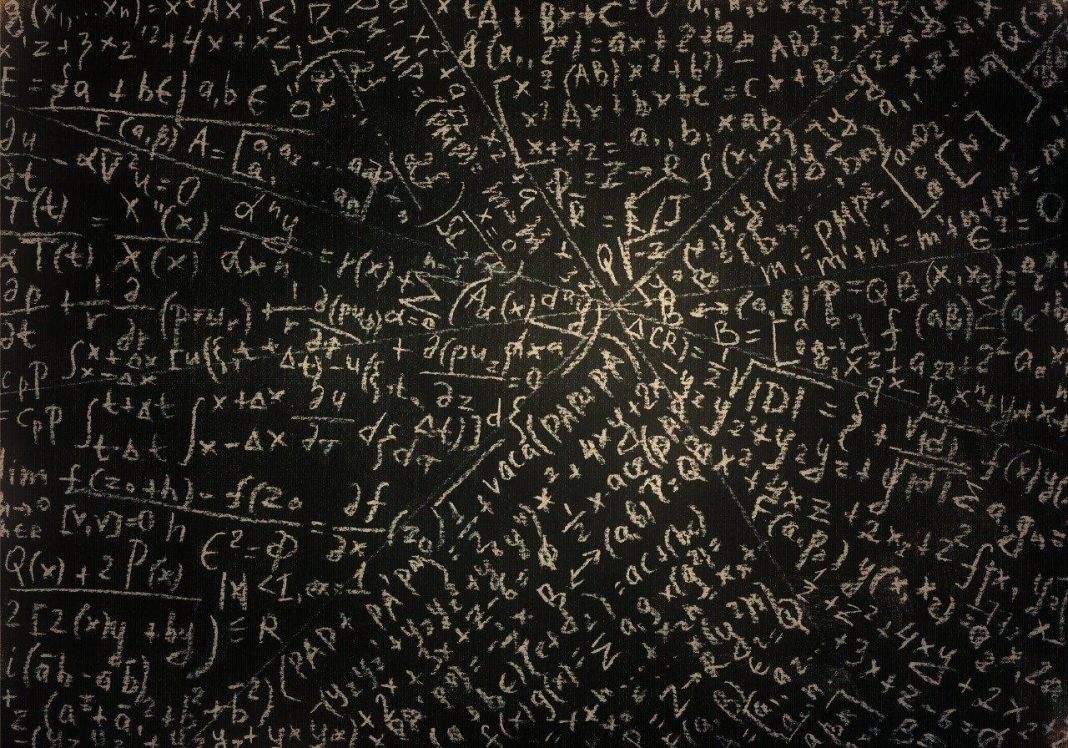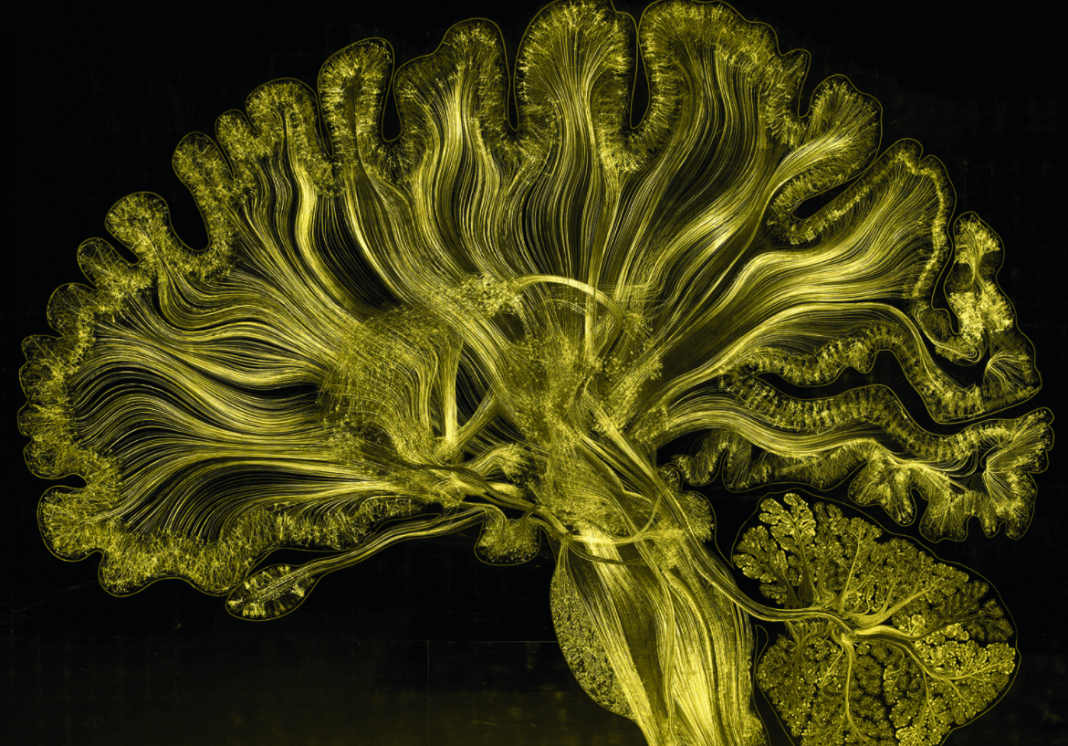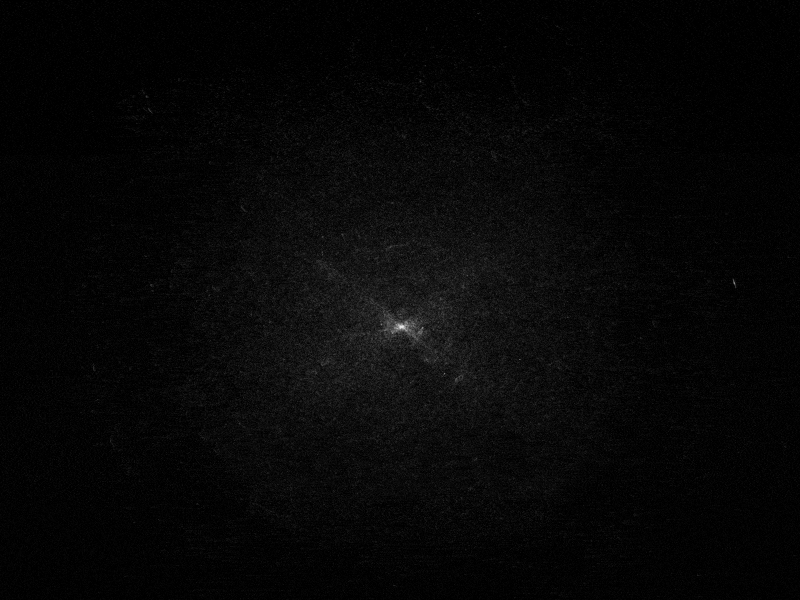- 0share
- Follow
Nowadays, the Standard Model is depicted in a table, similar to the periodic table, but it hasn’t always been so. Originally it was an equation, a very long equation, a very long and complex equation that attempts to explain all the laws of physics, particles, their characteristics and relation to each other.
While more complicated than 42, here is a brief rundown of the equation and its parts.
The Entire Equation
There are many ways to write out the Standard Model, but one of the easiest, most compact, and popular ways is in the Lagrangian form. This particular way of representing the equation also attempts to explain the maximum amount of energy the system can contain.
The First Section
The opening lines of the Standard Model are precisely specific to a particle known as a gluon, a boson of the powerful force. There are eight types of gluons, which interact with each other and carry a color charge.
The Second Section
Accounting for nearly half the equation, the second part is devoted to the explanation of boson interaction, especially the W and Z bosons.
Bosons are particles that carry force. There are four types which interact by utilizing the three fundamental forces. Photons have electromagnetism, gluons have a strong force, and the W and Z bosons have weak force.
The Higgs boson acts differently than the others and has its own section devoted to it.
The Third Section
Elementary matter particles and their interaction with weak force are explained in this third section of the equation. In this formula, particles have three generations, each with unique masses. Weak force aids in the decay of massive matter particles into less massive particles.
Additionally, it covers the basic actions within the Higgs field that some particles derive their mass from. Interestingly, there are incorrect suppositions in this section that are at odds with recent discoveries in physics. For example, it presumes that neutrinos have no mass.
The Fourth Section
The fourth section deals with the way particles associate with Higgs ghost, artifacts of a Higgs field. This is a common occurrence in quantum mechanics where particles often take multiple paths that cannot be fully accounted for in equations. Therefore redundancies are used in equations. To clean these up, scientists use particles called ghosts.
The Fifth Section
The final section in the equation includes Faddeev-Popov ghosts which negate redundancies found in weak force interactions. As complicated as the overall equation appears, it explains much more than 42 and is the closest thing we have to explain everything in the universe.

More News to Read
- Nine Launches in and SpaceX is leaving Critics in the dust
- New Theory Says That the Past is Influenced by the Future
- How is Artificial Intelligence Changing How We do Science?
- New Snapchat Features sees up tick in Snap Inc Stock
- When Your Next Flight Will be on an Electric Airplane?
- 0share
- Follow











